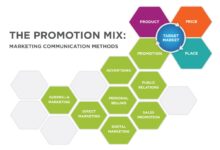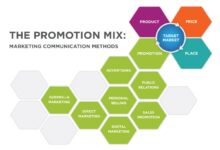Sales Force Secrets: 7 Powerful Strategies to Skyrocket Performance
Ever wondered what separates a good sales team from a legendary one? It’s not just charisma or luck—it’s strategy, structure, and relentless execution. Welcome to the world of the modern sales force, where data meets drive and results are engineered, not left to chance.
What Exactly Is a Sales Force?

The term sales force refers to a group of professionals responsible for selling products or services on behalf of a company. This team can include sales representatives, account managers, field agents, inside sales personnel, and regional directors. They are the frontline warriors in the battle for market share, customer acquisition, and revenue growth.
The Evolution of the Sales Force
Historically, a sales force was made up of traveling salesmen who knocked on doors or visited stores. Today, the sales force has evolved into a sophisticated, tech-driven engine powered by CRM systems, data analytics, and digital communication tools. From the horse-drawn wagons of the 1800s to AI-powered lead scoring in 2025, the transformation has been dramatic.
- 19th Century: Peddlers and door-to-door sales
- 20th Century: Rise of corporate sales teams and territory management
- 21st Century: Digital transformation, remote selling, and CRM integration
Types of Sales Force Structures
Companies organize their sales force in various ways depending on their market, product complexity, and customer base. The most common models include:
- Geographic Structure: Sales reps are assigned to specific regions or territories.
- Product-Based Structure: Teams are organized around specific product lines or services.
- Customer-Based Structure: Sales force is segmented by customer type (e.g., enterprise vs. SMB).
- Matrix Structure: A hybrid approach combining geography, product, and customer focus.
“Your sales force is not just a cost center—it’s your most valuable strategic asset.” — Salesforce CEO Marc Benioff
Why a High-Performing Sales Force Matters
A well-oiled sales force is the lifeblood of any revenue-generating organization. It directly impacts customer acquisition, retention, and brand perception. But beyond revenue, a strong sales force influences product development, market intelligence, and competitive positioning.
Revenue Generation and Growth
The primary function of a sales force is to drive revenue. According to a Gartner study, companies with optimized sales forces achieve 23% higher revenue growth than their peers. This isn’t accidental—it’s the result of targeted outreach, effective messaging, and relationship-building.
- Direct contribution to quarterly and annual revenue targets
- Ability to upsell and cross-sell existing customers
- Shortening sales cycles through better qualification and follow-up
Customer Insights and Market Intelligence
Sales teams are on the front lines, hearing customer pain points, objections, and feedback in real time. This makes the sales force a critical source of market intelligence. Companies like Apple and Amazon use sales feedback to refine product features and marketing strategies.
- Identifying emerging customer needs
- Spotting competitor moves before they hit the market
- Providing input for R&D and product innovation
Brand Representation and Trust Building
Every interaction with a sales rep shapes the customer’s perception of the brand. A knowledgeable, empathetic, and professional sales force builds trust and credibility. In contrast, a poorly trained team can damage reputation and lose deals.
- First impressions matter—sales reps are often the first human touchpoint
- Consistency in messaging strengthens brand identity
- Long-term relationships foster customer loyalty and referrals
Key Components of an Effective Sales Force
Building a high-performing sales force isn’t just about hiring aggressive closers. It requires a holistic approach that includes recruitment, training, technology, and culture. Let’s break down the essential components.
Recruitment and Talent Acquisition
The foundation of a great sales force is the right people. Companies must look beyond resumes and focus on traits like resilience, empathy, and coachability. According to LinkedIn’s 2024 Sales Hiring Report, 78% of top-performing sales teams prioritize cultural fit over experience.
- Use behavioral interviews to assess soft skills
- Leverage psychometric assessments for personality profiling
- Implement structured onboarding to reduce ramp time
Training and Continuous Development
Even the most talented reps need ongoing training. A CSO Insights report found that organizations with formal sales training programs see a 22% higher win rate. Training should cover product knowledge, objection handling, negotiation, and CRM usage.
- Onboarding programs that last 4–8 weeks
- Quarterly skill-building workshops
- Mentorship and shadowing opportunities
Performance Metrics and KPIs
You can’t manage what you don’t measure. Sales force performance must be tracked using clear, actionable KPIs. Common metrics include:
- Conversion rate (leads to customers)
- Average deal size
- Sales cycle length
- Quota attainment rate
- Customer acquisition cost (CAC)
“What gets measured gets managed. And what gets managed, gets improved.” — Peter Drucker
Leveraging Technology in the Modern Sales Force
Today’s sales force operates in a digital-first environment. Technology isn’t just a tool—it’s a force multiplier. From CRM platforms to AI-driven insights, tech enables scalability, accuracy, and speed.
CRM Systems: The Backbone of Sales Operations
Customer Relationship Management (CRM) systems like Salesforce, HubSpot, and Microsoft Dynamics are central to modern sales force operations. They store customer data, track interactions, automate follow-ups, and provide real-time analytics.
- Centralized customer database for seamless collaboration
- Automated workflows for lead nurturing
- Forecasting tools for revenue prediction
AI and Predictive Analytics
Artificial Intelligence is transforming how sales teams identify prospects, prioritize leads, and personalize outreach. AI tools can analyze historical data to predict which leads are most likely to convert, recommend optimal call times, and even draft personalized emails.
- Lead scoring based on engagement and behavior
- Chatbots for initial customer interaction
- Natural language processing (NLP) for call analysis
Sales Enablement Tools
Sales enablement platforms like Seismic, Showpad, and Highspot provide reps with the content, training, and insights they need to sell more effectively. These tools ensure that every member of the sales force has access to up-to-date product sheets, battle cards, and competitive intelligence.
- Content management and version control
- Usage analytics to see which materials drive conversions
- Integration with CRM and email platforms
Sales Force Motivation and Incentive Strategies
Even the most skilled sales force will underperform without proper motivation. Incentives, recognition, and career growth opportunities are critical to maintaining high morale and productivity.
Commission Structures and Bonus Plans
Financial incentives are the most direct way to motivate a sales force. However, the structure matters. A well-designed compensation plan balances base salary with performance-based bonuses to encourage both stability and ambition.
- Graduated commission tiers to reward overachievement
- Team-based bonuses for collaborative selling
- Non-monetary rewards like gift cards or travel
Recognition and Career Advancement
Money isn’t everything. Public recognition, titles, and promotion paths are powerful motivators. Top performers want to feel valued and see a future within the organization.
- Monthly “Top Performer” awards
- Clear career ladders (e.g., SDR → Account Executive → Sales Manager)
- Leadership training for high-potential reps
Creating a Winning Sales Culture
Culture is the invisible engine behind a high-performing sales force. A culture of accountability, collaboration, and continuous improvement drives long-term success. Leaders must model the behavior they expect and foster an environment where feedback is welcomed.
- Regular team huddles and performance reviews
- Open communication channels between reps and managers
- Emphasis on learning from losses, not just celebrating wins
Challenges Facing Today’s Sales Force
Despite advances in technology and training, modern sales teams face significant challenges. From market saturation to changing buyer behavior, these obstacles require strategic adaptation.
Information Overload and Buyer Skepticism
Today’s buyers are more informed than ever. They research products online, read reviews, and compare options before ever speaking to a sales rep. This means the sales force must add value beyond basic information—offering insights, solutions, and trust.
- Buyers spend 67% of their journey self-educating (Gartner)
- Sales reps must act as consultants, not just sellers
- Personalization is key to cutting through the noise
Remote Selling and Virtual Engagement
The shift to remote work has changed how sales forces engage with customers. Virtual meetings, digital demos, and online negotiations are now standard. While this increases efficiency, it also reduces the personal connection that in-person meetings provide.
- Need for strong video communication skills
- Investment in high-quality conferencing tools
- Building rapport without physical presence
Talent Retention and Burnout
Sales is a high-pressure job. Burnout is real, and turnover rates in sales teams average 30–40% annually. Companies must proactively support mental health, work-life balance, and career satisfaction.
- Implement wellness programs and flexible schedules
- Monitor workload and set realistic quotas
- Provide access to coaching and counseling
Future Trends Shaping the Sales Force
The sales force of tomorrow will look very different from today. Emerging technologies, shifting customer expectations, and global market dynamics are driving rapid change.
Hyper-Personalization Through Data
With access to vast amounts of customer data, sales forces will deliver increasingly personalized experiences. AI will enable reps to tailor messaging, timing, and offers to individual buyer profiles.
- Dynamic content that changes based on user behavior
- Predictive recommendations for next-best actions
- Integration with customer journey mapping tools
Rise of the Hybrid Sales Model
The future belongs to hybrid sales—combining self-service portals, digital marketing, and human-led selling. Customers will engage with brands through multiple channels, and the sales force must be ready to step in at the right moment.
- Seamless handoff from marketing to sales
- Inside sales teams supporting field reps
- Use of chat and messaging apps for real-time engagement
Globalization and Cross-Cultural Selling
As businesses expand internationally, sales forces must adapt to diverse cultures, languages, and buying behaviors. Cultural intelligence will become a core competency for global sales teams.
- Localized messaging and pricing strategies
- Training in cross-cultural communication
- Use of local sales partners or regional hubs
“The best salespeople don’t sell products—they solve problems.” — Unknown
Building a Scalable Sales Force: A Step-by-Step Guide
Whether you’re a startup or a multinational, scaling your sales force requires a deliberate strategy. Here’s a proven framework to grow your team without sacrificing quality.
Step 1: Define Your Ideal Customer Profile (ICP)
Before hiring a single rep, you must know who you’re selling to. An ICP outlines the characteristics of your most valuable customers—industry, company size, pain points, and decision-making process.
- Analyze existing customer data for patterns
- Interview top customers to understand their journey
- Refine ICP quarterly based on market feedback
Step 2: Design Your Sales Process
A repeatable sales process ensures consistency and scalability. Map out each stage—from lead generation to closing—and define the actions, tools, and metrics for each step.
- Prospecting → Qualification → Discovery → Presentation → Negotiation → Close
- Document scripts, email templates, and objection responses
- Integrate process into CRM for tracking and coaching
Step 3: Hire and Train Strategically
Scale smartly by hiring for potential, not just experience. Invest in a structured onboarding program that equips new reps with knowledge, tools, and confidence.
- Use role-playing exercises to simulate real sales scenarios
- Pair new hires with mentors for first 90 days
- Measure ramp time to full productivity
Step 4: Implement Technology Stack
Equip your sales force with the right tools. A modern stack includes CRM, email automation, video conferencing, and analytics platforms.
- Choose integrated tools to reduce friction
- Train reps on tool usage and best practices
- Regularly audit tool effectiveness
Step 5: Monitor, Optimize, and Scale
Scaling isn’t a one-time event—it’s an ongoing process. Continuously analyze performance data, gather feedback, and refine your approach.
- Conduct monthly performance reviews
- A/B test messaging and outreach strategies
- Expand to new markets or segments based on success
What is the role of a sales force in a company?
The sales force is responsible for generating revenue by identifying prospects, building relationships, presenting solutions, and closing deals. They also provide critical feedback to product, marketing, and leadership teams.
How can a company improve its sales force performance?
Companies can improve performance through targeted training, clear KPIs, effective use of CRM and AI tools, incentive programs, and fostering a positive sales culture.
What are the biggest challenges facing sales teams today?
Key challenges include buyer skepticism, remote selling fatigue, high turnover, information overload, and the need for constant adaptation to new technologies.
What is the difference between inside sales and field sales?
Inside sales teams operate remotely, using phone and digital tools to engage customers. Field sales reps meet clients in person, often handling complex or high-value deals that require face-to-face interaction.
How is AI impacting the modern sales force?
AI is enhancing lead scoring, automating routine tasks, providing real-time coaching, and enabling hyper-personalized outreach, allowing sales reps to focus on high-value activities.
Building and managing a high-performing sales force is both an art and a science. It requires the right mix of people, processes, technology, and culture. From defining your ideal customer to leveraging AI-driven insights, every element plays a role in driving sustainable growth. The most successful organizations don’t just manage their sales force—they empower it. By investing in training, tools, and motivation, companies can transform their sales teams into strategic assets that deliver results year after year. The future of selling is here—and it’s powered by a smarter, faster, and more connected sales force.
Further Reading:



